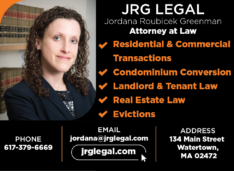CROWN Act Now Law
2022-09-20 Business Update – CROWN Act now law
Resource Person:
Douglas Quattrochi - Doug
[Start 0:00:00]
Our business update for today is about the CROWN Act, which is a new anti-discrimination protection available in Massachusetts.
I hope you know that we’re fortunate to live in a country and in a state where we cannot be denied rental housing because of our membership in one of many protected classes, and chief among these is race and color. For instance, Henry Trotter took a picture of his family. He’s not a MassLandlords member, but he’s just someone who wanted to demonstrate that a whole bunch of different colors and hairstyles are possible in a single family. Now in Massachusetts law, hairstyles, as well as just race and color, are explicitly protected as an attribute of our race and color.
Chapter 4 Section 7 has been modified by the CROWN Act to redefine race, as including the normal definition of what we actually are, but then also all the traits normally associated with race including but not limited to hair texture, hair type, hair length, and protective hairstyles. The phrase “protective hairstyles” is there to differentiate from a so-called natural hairstyle, so a natural hairstyle might be very long and prone to breakage, but a protective hairstyle will prevent snagging and breaking and could be a braid, lock, a twist, Bantu knots, or other hair covering, or some other kind of formation.
If you use one of these hairstyles, you don’t need the explanation, but for those of us who don’t use one of these hairstyles, I’ll just demonstrate a couple of hairstyles here so we know what we’re not talking about.
Here’s an example of a natural hairstyle historically associated with race. If somebody shows up for an apartment tour, if your renter adopts this hairstyle, don’t comment on it, same way you wouldn’t comment on my hair. It would be weird to have somebody ask about why my hair is this way, so landlords don’t do that. That’s a natural hairstyle as opposed to protective hairstyle.
There are many different ways that we can protect our hair. Braids are common in many cultures. You can have multiple short braids. You can have one long braid. If you prefer, you could instead adopt what’s called a twist. If you let your twist get long and mature, then that becomes what’s known as locks. If you don’t like the locks option, you can adopt Bantu knots for your hair. If none of those appeal, it’s also totally okay to keep your hair in a do-rag or other protective formation.
As landlords, we don’t have to know anything about hairstyles. We should just be talking about the apartment and the neighborhood but not our applicant. You wouldn’t ask why someone has a certain race or color, so don’t ask why they have hair a certain way, don’t ask why they dress that way.
This is a really important protection because many of use get weird questions lobbed at us as we go through life, and this hair protection is really going to stop a lot of inappropriate questions. As a landlord, you should never be asking anything like this. We’ve got a full article up on our site going through this in detail under the CROWN Act.
Of course, the gold standard to avoid any possible claim of discrimination and avoid up to $50,000 in fines is to use our applicant qualifier or other objective point scoring system. Members can download our applicant qualifier on our site and learn how to score applicants on the basis of credit, criminal history, eviction history, income, and all kinds of business-relevant factors that don’t take into account protective class status like race, color, or natural or protective hairstyle.
[End 0:03:20]




